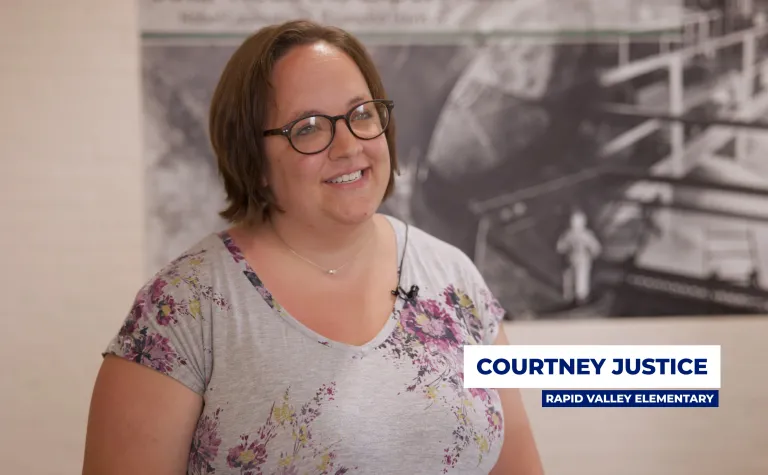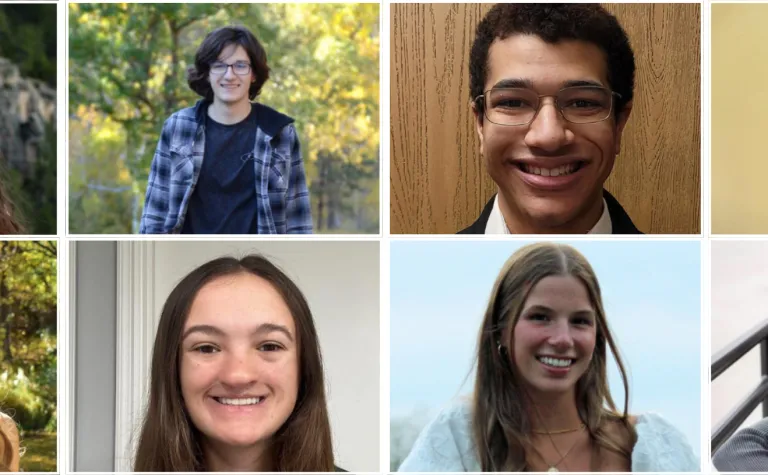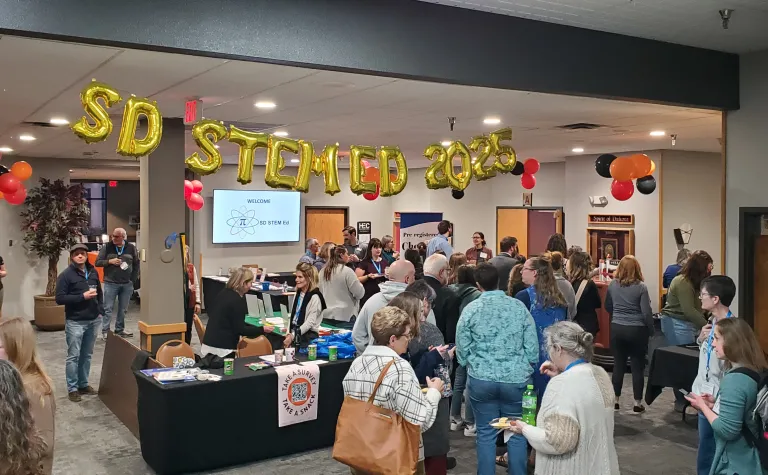Early-career educator brings particle physics into Wyoming classroom
Emily Siemonsma’s hands-on STEM classroom opportunities include a cosmic ray detector provided by the QuarkNet Collaboration and tech-support thanks to a donation from Nieman Enterprises.
For many, teaching math or science to a classroom full of teenagers might sound intimidating. For Emily Siemonsma, it’s a daily reality—and one she approaches with humility.
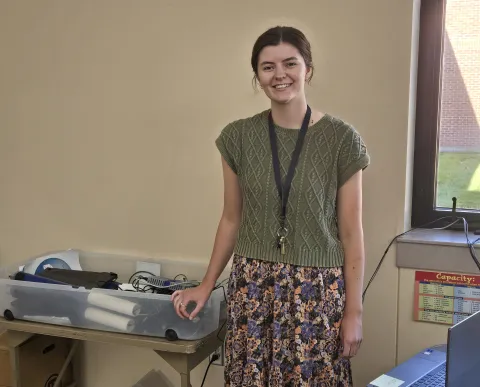
Emily Siemonsma, in a classroom with scientific equipment provided though QuarkNet thanks to a donation from Nieman Enterprises.
“This is only my second-year teaching. So, I know nothing,” Siemonsma said with a smile.
Siemonsma teaches math and science at Hulett High School. Her lack of pretension about her admirable ability to engage high school students in subjects like math, physics, or computer programming, may stem from some of the great mentors that she has encountered along the way.
“I always loved math. I loved my math teacher in high school, and I always just really enjoyed that. So, I went to school for math, not knowing if I'd teach or not—I took a few education classes, and I just loved what they were saying about how to inspire kids, and this drew me to math education.”
While studying at South Dakota State University, Siemonsma stayed in touch with a former high school teacher turned mentor, Chad Ronish, who is now a science education specialist at the Sanford Underground Research Facility (SURF). Ronish introduced her to the QuarkNet Collaboration, a national program that partners science teachers with particle physicists. Siemonsma first encountered QuarkNet as a high school student, and now utilizes the program as a teacher.
“This last summer, I got to meet with other QuarkNet teachers from the area who are doing particle physics in their own classrooms. This gave me a lot of new ideas about how to integrate it into math and science teaching. We have a QuarkNet cosmic ray detector in my classroom now, which is super exciting for my kids just to see and hear about. This is one of the ways we can actually make school real to the students,” Siemonsma said.
The QuarkNet Cosmic Ray Muon Detector in her classroom allows her students to collect scientific data on cosmic rays striking the earth. Students can then analyze that data and form their own experiments. This has been made possible by a donation and support from Neiman Enterprises who provide computer and tech support for Siemonsma’s students.
“This is a great example of how a community partner like Neiman Enterprises is able to support education and create learning opportunities for area students,” said Chad Ronish.
Ronish adds that Siemonsma has also worked with the South Dakota Space Grant Consortium and the Wyoming Space Grant Consortium to develop classroom math units and a suite of math activities based on the operations and history of SURF. This brings the value of math to life for students.
“Using real engineering and science projects like those at SURF allows teachers like Emily to create lessons that use "math that matters" and math that has a purpose. Using math to solve real world problems is an incredible skill for students to gain in school,” Ronish said.
Great teachers often thrive with great support from their communities. For Siemonsma, that support began with her own high school math teacher, Rick Hamilton, who now teaches at Western Dakota Technical College in Rapid City. Hamilton describes Siemonsma as exactly the kind of teacher needed to inspire the next generation of leaders in the fields of science and technology.
“I love hearing when my students are out there doing what they love; when they go off and pursue their dreams. Emily’s use of QuarkNet technology in the classroom is a great way to bring a visual representation to something that oftentimes is pretty abstract. She is giving her students the tools that help make all this more tangible,” Hamilton said.
For Siemonsma, seeing this come to life in the classroom provides inspiration and drive for her own work as a teacher.
“I love when students see something and they actually think it is cool and they want to play with it or learn about it. That definitely makes me want to keep teaching,” Siemonsma said. “This is part of what QuarkNet offers me as an educator. I'm slowly getting the kids to understand and get interested. It just helps me lesson plan and keep the students engaged.”
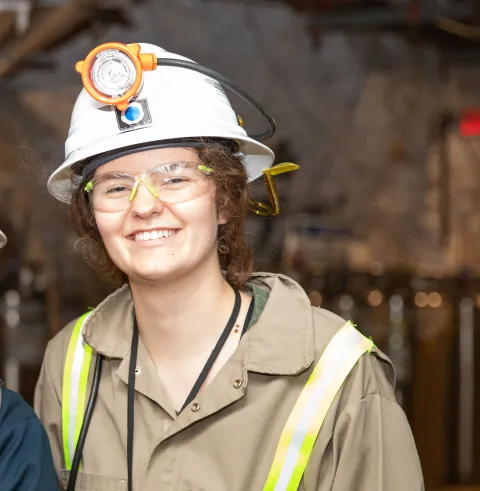
Emily Siemonsma on a visit to the 4850 Level of SURF.
Photo by Matthew Kapust
Programs like QuarkNet, along with support from community partners such as Neiman Enterprises, extend SURF’s mission beyond the laboratory and into the community. By connecting educators with cutting-edge research, these partnerships help inspire the next generation of problem-solvers and scientists—ensuring that discoveries made deep underground ripple outward and continue in the decades ahead.

